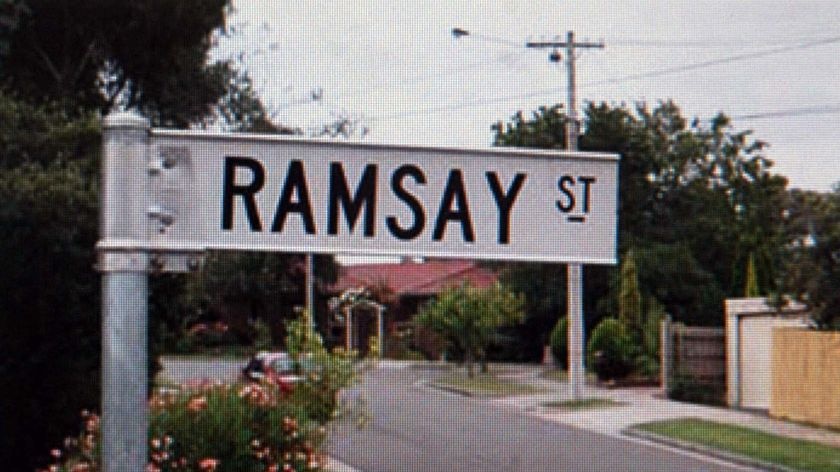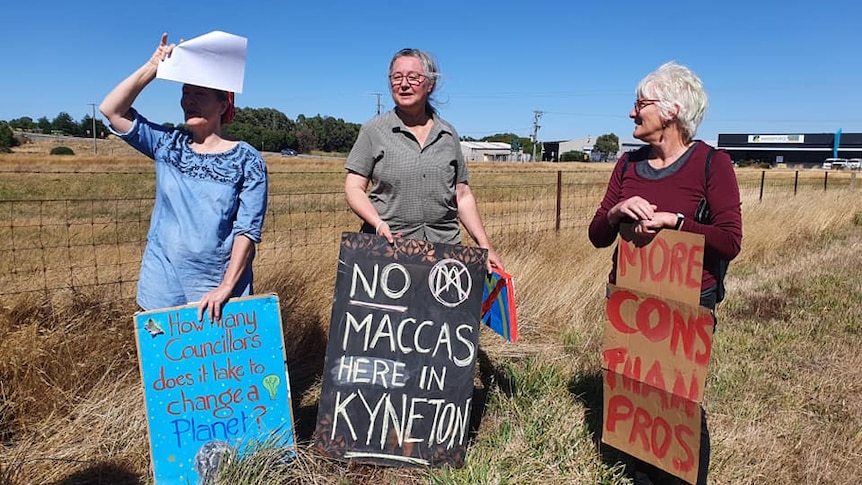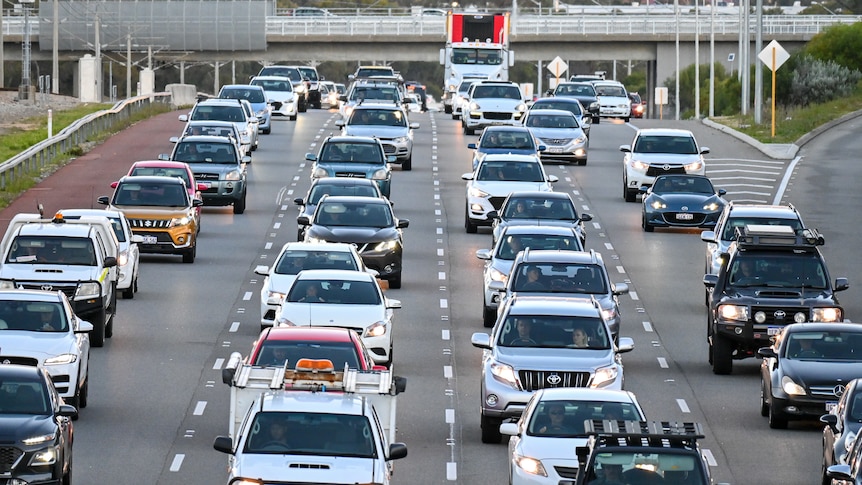The recent end of the long-running soap Neighbors has raised the question: why was Ramsay Street not Ramsay Court?
Key points:
- Ramsay Street was a cul-de-sac, which would have earned it a different street name in NSW
- Councils determine the road type, which they submit to the state’s Geographical Names Board
- Some Sydney suburbs have themes in their streets, including the names of cricketers and famous battles
Pin Oak Court in Melbourne’s east doubled as the famous fictional street, correctly acknowledging its cul-de-sac status.
But why is a street not a road, an avenue not a boulevard and a crescent not a circuit?
ABC Radio Sydney Drive presenter Richard Glover put these questions to the New South Wales Geographical Names Board.
If Ramsay Street were under the purview of the NSW board, it would have been a court, a close or a place, deputy surveyor general and director of survey operations Thomas Grinter said.
“With all the high drama that happened on Ramsay Street, I’m pretty sure it would have come to our attention,” Mr Grinter said.
The authority is in charge of naming places in NSW like mountains, railway stations and suburbs. However, roads are typically named by local councils.
Mr Grinter said the state authority receives applications from councils, which are then reviewed to avoid duplicates.
When is a street a street?
While “road” is a generic term used for vehicle passages from one place to another, “street” refers to a passage found in a town or an urban environment.
Mr Grinter explained the board’s definitions for other common road types:
- Avenue: a broad open-ended road usually lined with trees
- Boulevard: a wide open-ended road usually ornamented with trees and plants
- Drive: a wide thoroughfare without many cross-streets
- Parade: a public roadway with good pedestrian facilities on either side
- Parkway: a roadway through parklands or open grassland area
- Terrace: a roadway where the homes are raised above the road level
Some areas use a particular road type frequently, which is taken into account by council when putting forward the names of road types.
“In one particular suburb or town, you might have a lot of very similar road types throughout,” Mr Grinter said.
Another interesting rule is that the road cannot be named after a living person, according to Mr Grinter.
Themes of your town
Some areas of the city appear to have been exempt from that rule though.
In Newington, which hosted the athletes’ village for the 2000 Olympics, some streets are named after living Australian athletes.
Examples include Perkins Avenue, Thorpe Place and O’Neill Avenue, named after Kieran Perkins, Ian Thorpe and Susie O’Neill.
Other suburbs have adopted themes when naming their local arteries.
Cremorne in Sydney’s lower north shore has many names of cricketers, including Spofforth Street, Bannerman Street, Boyle Street and Murdoch Street.
Croydon Park holds castle names, such as Windsor Avenue, Balmoral Avenue and Dunmore Street.
Marsfield on the Upper North Shore kept to its namesake, naming its roads after famous battles including Waterloo Road, Balaclava Road and Agincourt Road.
The tradition is not limited to Sydney suburbs. Lithgow in the state’s Central Tablelands has many streets named after weapons such as Carbine Street and Rifle Parade, possibly in recognition of the city’s small arms factory.
Some Sydney streets pay homage to ancient history, for example The Appian Way in Bankstown.
For some streets, the authority may have simply tried to have it both ways — see Avenue Road in Mosman, Glebe and Hunters Hill.
.


